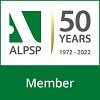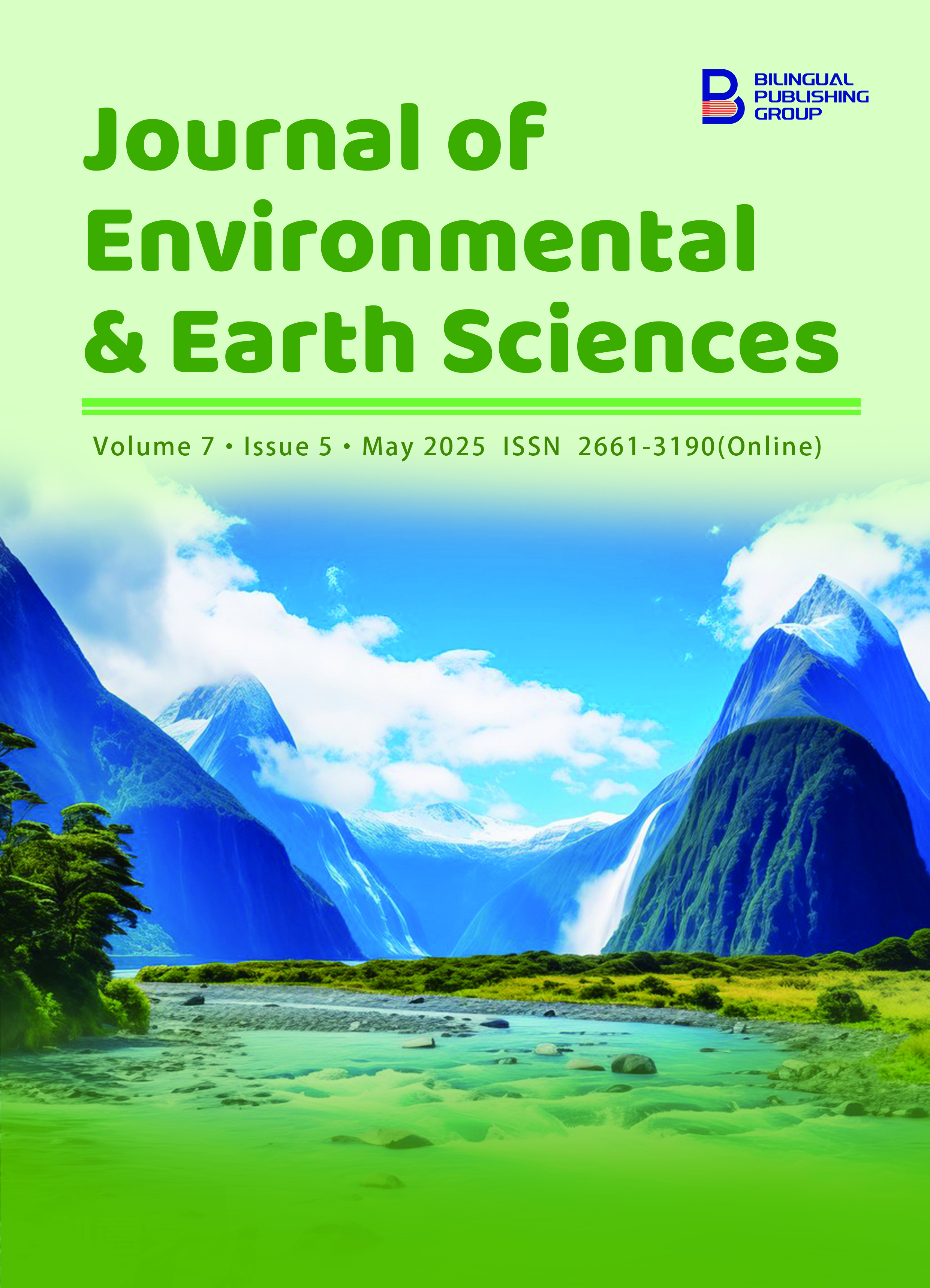
Study of Chemical and Biological Indicators of Saline Pollution of the Coastal Lake Sidi Boughaba (Kenitra, Morocco)
DOI:
https://doi.org/10.30564/jees.v7i5.8423Abstract
For around fifty years, the regression and degradation of wetlands were considered so worrying that they were the subject of an international Convention signed on 2 February 1971, in Iran (RAMSAR). This treaty aims to conserve wetlands meeting criteria of international importance through the notion of rational use of these spaces and their biodiversity. The national and even international value of Lake Sidi Boughaba (Kenitra, Morocco) lies in its biodiversity which allowed its inclusion on the Ramsar list in 1980. This importance motivated us to begin an ecological assessment of the level of its pollution through spatiotemporal monitoring and analysis of physicochemical tracers from surface waters at seven sampling stations between January and December 2023. The waters of Lake Sidi Boughaba are relatively basic (pH=8.63), cold (15.14°C), very hard (64 meq/L), quite turbid (7.65 NTU), very salty (1935.85 µs/cm) and well saturated with Calcium ions = 312; Magnesium = 605; Chlorides = 5892; Sulfates = 944; Silicates =26 (mg/l). Other elements including nitrates (1.29 mg/l), ammonium (1.56 mg/l), fluorides (410 µg/l), iron (350 µg/l) and manganese (35 µg/l) are low. This study concludes that Lake Sidi Boughaba is classified in the category of oligomesotrophic lakes and that it is too threatened by the progressive transformation of its fresh water into brackish water and consequently the change in its benthic and planktonic fauna necessary for food of avian fauna. The study further concludes that this wetland is under significant threat, and to protect its biodiversity, innovative approaches to hydrological development are necessary.
Keywords:
Ecosystem; Lake; Pollution; Physicochemistry; Biodiversity; Sidi Boughaba; Mehdia; MoroccoReferences
[1] United Nations Development Programme, 2023. Water at the core of sustainable development. Proceedings of the UN Water Conference: Our watershed moment: Uniting the world for water; New York, NY, USA, 22–24 March 2023.
[2] Hsissou, Y., Mudry, J., Mania, J., et al., 1997. Dynamique et salinité de la nappe côtière d'Agadir (Maroc), influence du biseau salé et des faciès évaporitiques. IAHS Publications-Series of Proceedings and Reports-Intern Assoc Hydrological Sciences. 244, 73–82. Available from: http://hydrologie.org/redbooks/a244/iahs_244_0073.pdf
[3] Hsissou, Y., 1999. Impact of the natural and anthropogenic environment on the quality of alluvial waters in a semi-arid zone: the case of the Souss plain (Morocco) [Doctoral Thesis]. Agadir, Morocco: University Ibn Zohr. p. 228.
[4] Hsissou, Y., Mudry, J., Mania, J., et al., 1999. Use of the Br/Cl ratio to determine the origin of the salinity of groundwater: an example from the Souss plain (Morocco). Reports of the Academy of Sciences - Series IIA - Earth and Planetary Science. 6(328), 381–386.
[5] Ramsar Convention Bureau, 1990. Proceedings of the fourth meeting of the Conference of the Contracting Parties. Convention on Wetlands of International Importance especially as Waterfowl Habitat, Montreux, Switzerland, 27 June to 4 July 1990. Ramsar Convention Bureau: Gland, Switzerland. pp. Vol. IV + 336, Vol. III + 367.
[6] Shallari, A., 2013. Albanian Wetlands: Transmitting International and European Environmental Standards in Albania and the Western Balkans. The Case of Five Wetlands: Shkodra, Karavasta, Narta, Butrinti, and Prespa [Doctoral Thesis]. Montpellier: Paul Valéry University-Montpellier III. Available from: https://hal.archives-ouvertes.fr/tel-00967139/
[7] United Nations Educational, Scientific and Cultural Organization, 1972. Convention for the Protection of the World Cultural and Natural Heritage (World Heritage Convention). 16 November 1972, Paris, France.
[8] Washington Convention, 1973. Convention on International Trade in Endangered Species of Wild Fauna and Flora. 3 March 1973, Washington, D.C., USA.
[9] European Economic Community, 1979. Directive 79/409/CEE of the Council concerning the conservation of wild birds. Official Journal of the European Communities. L 103, 1–18. CELEX: 379L0409.
[10] Secretariat of the Ramsar Convention, 2016. RAMSAR Handbooks, 5th ed. Introduction to Wetland Conservation. Secretariat of the Ramsar Convention: Gland, The Netherlands.
[11] Council of Europe, 1979. Convention on the Conservation of European Wildlife and Natural Habitats (Bern Convention on the Conservation of European Wildlife and Natural Habitats). ETS No. 104, 19 September 1979.
[12] United Nations, 1979. Convention on the Conservation of Migratory Species of Wild Animals. Bonn, Germany. 23 June 1979. Available from: https://www.cms.int/en/convention-text (cited 25 February 2025).
[13] Mediterranean Wetlands Initiative (Med Wet), 2007. Status of Wetland Inventories in the Mediterranean Region. Tour du Valat Foundation: Arles, France. Available from: https://medwet.org/codde/OtherResources/Status2007.pdf (cited 25 February 2025).
[14] Costa, L.T.; Farinha, J.C.; Hecker, N.; et al., 1996. Mediterranean Wetland Inventory: A Reference Manual. MedWet / Instituto da Conservação da Natureza / Wetlands International: Lisbon, Portugal. Volume I.
[15] Gayral, P., 1954. Phytolimnological research in Morocco. Work of the Cherifian Scientific Institute, Botanical Series. 4, 306.
[16] Thévenot, M., 1976. Birds of the Sidi-Bou-Rhaba reserve. Bulletin of the Institute of Science, Rabat. 1, 68–90.
[17] Atbib, M., 1988. Coastal vegetation of northern Morocco [Doctoral Thesis]. Rabat: Mohammed V University. p. 274.
[18] Ionesco, T., Mathez, J., Rouge, J.F., 1966. Climatology, bioclimatology and phytogeography of Morocco. Agronomic Research Notebooks. 24, 27–58.
[19] Jacquemin, G.; Boudot, J.P., 1987. Dragonflies (Odonata) of Morocco. French Society of Odonatology: Bois-d'Arcy, France.
[20] Najy, M., 2018. Hydrochemical Approach to Salinization and Organic and Metallic Pollution of the Waters of Lake Sidi Boughaba and study of their Impact on Macroinvertebrates (Kénitra, Morocco) [Doctoral Thesis]. Kénitra, Morocco: Ibn Tofail University. p. 164.
[21] Lachhab, M., Najy, M., Talbi, F.Z., et al., 2022. Salinisation process of Lake Sidi Boughaba, Kenitra, North Western, Morocco: A statistical approach. Journal of Water and Land Development. 54(VII–IX), 194–200. DOI: https://doi.org/10.24425/jwld.2022.141572
[22] Lachahb, M., Salinization of water, threats and educational development of Lake Sidi Boughaba [Doctoral Thesis]. Kénitra, Morocco: Ibn Tofail University. p. 213.
[23] Bagnouls, F., Gaussen, H., 1953. Dry season and xerothermic index. Bulletin of the Natural History Society of Toulouse. 88, 193–239.
[24] Margat, J., 1985. Hydrology and Water Resources of Arid Zones. Bulletin of the Geological Society of France. 1(7), 1009–1020.
[25] De Martonne, E., 1926. Aridity index. Bulletin of the Association of French Geographers. 9, 3–5.
[26] Ramdani, M., 1981. Hydrobiological research on the Merja Sidi Boughaba (Atlantic coast of Morocco). Physicochemical study and faunal analysis. Bulletin of the Institute of Scientific Research of Rabat. 5, 73–137.
[27] Furnestin, J., Dardignac, J., Maurin, C., et al., 1958. New data on fish from Atlantic Morocco. Review of the work of the Institute of Maritime Fisheries. 22(4), 378–493.
[28] Rodier, J.; Legube, B.; Merlet, N.; et al., 2009. Water Analysis, 9th ed.: Natural Waters, Wastewater, Seawater. Dunod: Paris, France.
[29] Metcalfe, J., 1989. Biological Water Quality Assessment of Running Waters Based on Macroinvertebrate Communities: History and Present Status in Europe. Environmental Pollution. 60, 101–139. DOI: https://doi.org/10.1016/0269-7491(89)90223-6
[30] Newman, P.J., 1992. Surface Water Quality Indicators. In: Colombo, A.G. (ed.). Environmental Impact Assessment. Eurocourses, vol. 1, 1st ed. Springer: Dordrecht, The Netherlands. 211–233. DOI: https://doi.org/10.1007/978-94- 011-2528-4_12
[31] Beck, W.M., 1955. Suggested method for reporting biotic data. Sewage and Industrial Wastes. 27(10), 1193–1197.
[32] Tuffery, G., Verneaux, J., 1967. Methods for determining the biological quality of running water, Trav. Sect. p. et P. Cerafer. p. 23.
[33] Verniers, G., Micha, C.I., 1982. The role of the hydrobiologist in assessing the impact of human activities on aquatic environments. Trib. Cebedeau. 460(35), 117–131.
[34] Harchrass, A., 2012. Study of Biodiversity, Migration, Reproduction, Population Dynamics and Avian Populations of Sidi Boughaba RAMSAR – MAROC [Doctoral Thesis]. Kénitra, Morocco: Ibn Tofail University. p. 175.
[35] Cherkaoui, S.I., Dakki, M., Said, L., et al., 2013. Ten years of monitoring nesting anatidae on Lake Sidi Boughaba (Northwest Morocco): Situation, development trends and research perspectives. Journal of Ecology (The Earth and Life). 68(2). DOI: https://doi.org/10.3406/revec.2013.1691
[36] Qninba, A., 1999. Waders (Aves, Charadrii) of Morocco: synthesis of wintering at the national level and phenological study in the Ramsar site of Merja Zerga. [Doctoral Thesis]. Rabat, Morocco: Mohammed V University. pp. 206.
[37] Belgri, L., 1993. Bioecology of two species of larps Hyophtalmichty molitrix Val. and Cyprinus caprio L. Stocking experiment in the Rocade canal. [Doctoral Thesis]. Marrakech, Morocco: Cadi Ayyad University. pp. 137.
[38] Tifnouti, A., 1993. Structure and organization of the zooplankton population in Lake Lalla Takerkouste. [Doctoral Thesis]. Marrakech, Morocco: Cadi Ayyad University.
[39] El Bakouri, A., Ahmed, K., Haboubi, K., et al., 2024. Effects of saline land on shallow aquifers quality in north Morocco. Euro-Mediterranean Journal for Environmental Integration. 10(2), 815–829. DOI: https://doi.org/10.1007/s41207-024-00695-w.
Downloads
How to Cite
Issue
Article Type
License
Copyright © 2025 Manal Maaroufi, Elmoctar Habiby, Fatima Aalama, Salah Ait-Si, Dounia Bassir, Hajar Echayeb, Mariam Aznag, Brahim Bourkhis, Khadija El Kharrim, Driss Belghyti

This is an open access article under the Creative Commons Attribution-NonCommercial 4.0 International (CC BY-NC 4.0) License.







 Manal Maaroufi
Manal Maaroufi






